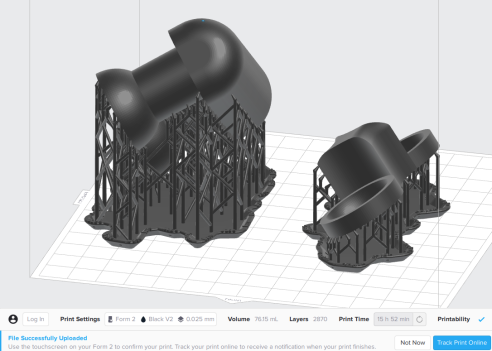To print the eyes, I chose powder bed fusion, though it is not suitable for practical parts and is known for being fragile. This method would be more than suitable for creating full-colour textured spheres. Furthermore, eyes not strictly functional pieces even though they have a functional purpose and as they are small solid spheres, would be difficult to break.
The printer I used for the eye spheres is the Gypsum 660 inkjet powder bed fusion printer. I exported the sphere as a textured OBJ which also created an MTL (Material Library File). These files, as well as the original texture source image, had to be taken into Materialise Magics (Materialise, Belgium) and exported as a ZPR which is compatible with the 3D Print (3D Systems, South Carolina) software to be oriented and sent to print.
The print itself took 59 minutes and each eye contains 237 layers of powder and post-processing extended the entire process to just over a day. The models had to be removed from the powder bed and transferred to the cleaning station to remove powder with compressed air. As the pieces are solid I could use a solid bristle brush to scrub the excess off the surface without risk of breaking them.
After all excess powder was removed, the models must be hardened with cyanoacrylate infiltrant 500/ superglue. I held the models over a box and poured the glue evenly over the surface area; repeating this process twice allowed the glue to absorb into the powder to harden the overall shape. The models are then dried under the in-built heater of the cleaning station overnight before being sanded with various grades of paper. This resulted in a smoother performance from the models when moved around in the eye cups, which would benefit the eyes used in the resin models due to the sharp residue from the support structure causing some resistance when articulating the eyes. With more layers and mixing sanding techniques, the models could have a smoother finish.









































































